Braces are an investment in a beautiful smile, but they require special care and attention to ensure successful treatment.
One crucial aspect of this care involves being mindful of the foods you eat.
While wearing braces, it’s essential to avoid certain foods that can damage brackets, dislodge wires, or lead to other complications.
The journey to straighter teeth doesn’t mean giving up all your favorite foods, but it does require some adjustments to your diet.
Hard, sticky, or difficult-to-bite foods pose the greatest risk to braces and should be avoided. This includes items like hard candy, popcorn, nuts, and whole apples.
10 Specific Foods to Avoid
1. Popcorn and Its Hidden Hazards

Popcorn is a major culprit for damaging braces. The kernels can break brackets or bend wires. Even popped pieces can get stuck in braces, leading to discomfort and potential decay. The hulls are especially problematic, as they can lodge between teeth and gums.
Avoid all types of popcorn, including a movie theater, microwave, and pre-popped varieties. Choose softer snacks like puffed rice cakes or soft pretzels instead. These alternatives provide a similar satisfying crunch without risking damage to orthodontic work.
If accidentally consuming popcorn, rinse thoroughly with water and brush carefully. Use interdental brushes to remove any trapped pieces.
2. Nuts and Seeds Dilemma
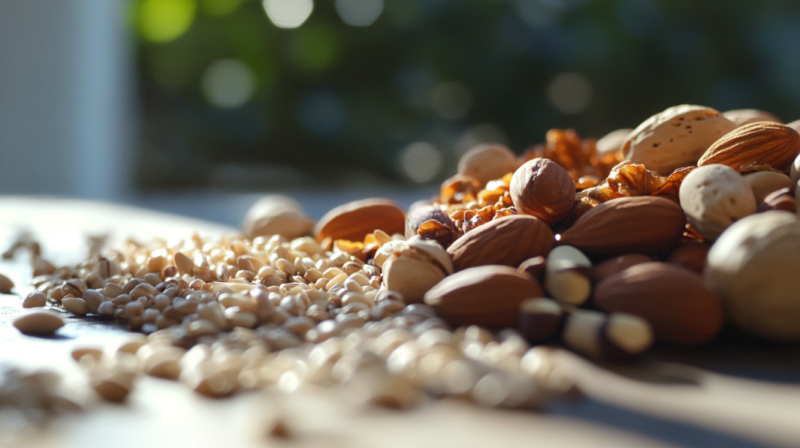
Nuts and seeds present multiple challenges for braces wearers.
Their hard texture can break brackets or bend wires.
Small pieces easily get trapped in braces, increasing decay risk.
Common problematic nuts include:
- Almonds
- Peanuts
- Cashews
- Pistachios
- Walnuts
Seeds to avoid:
- Sunflower seeds
- Pumpkin seeds
- Sesame seeds
For similar nutritional benefits, opt for nut butter or smooth seed spreads. These provide protein and healthy fats without the risk of damage.
3. Chewy Candies – A Sticky Situation
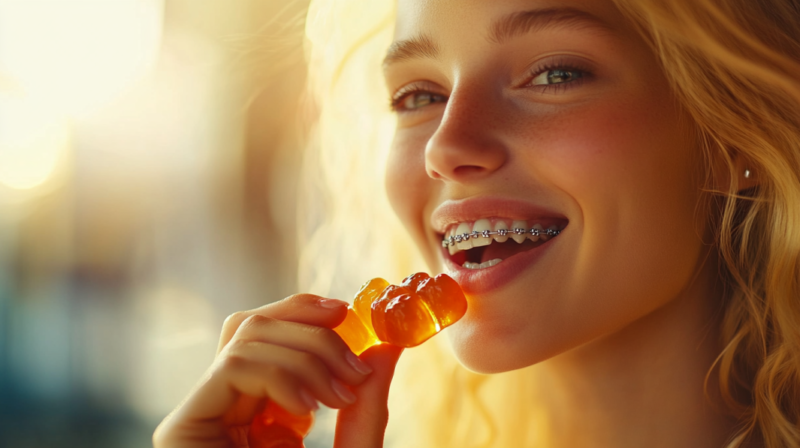
Chewy candies are particularly troublesome for braces. They stick to brackets and wires, potentially causing damage or dislodging components. The sugar content also increases cavity risk, especially when trapped against teeth.
Avoid these sticky sweets:
- Caramels
- Gummy bears
- Taffy
- Licorice
- Tootsie Rolls
- Starburst
For a sweet treat, choose soft options like ice cream or pudding. These satisfy cravings without adhering to braces. Remember to brush thoroughly after consuming sugary foods.
4. Crunchy Vegetables and Fruits
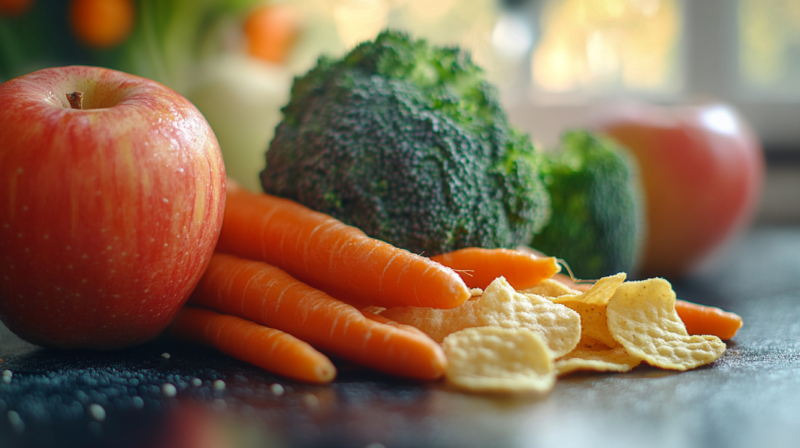
While nutritious, many raw vegetables and fruits can damage braces. Their hard texture may break brackets or bend wires. Biting into whole apples or carrots puts excessive pressure on front teeth and braces.
Crunchy produce to avoid includes:
- Raw carrots
- Whole apples
- Corn on the cob
- Raw celery
- Uncooked broccoli
- Corn Chips
Instead, cut these foods into small, bite-sized pieces. Alternatively, cook vegetables until soft. Opt for softer fruits like bananas, berries, or melons. These provide essential nutrients without risking orthodontic damage.
5. Hard or Toasted Breads
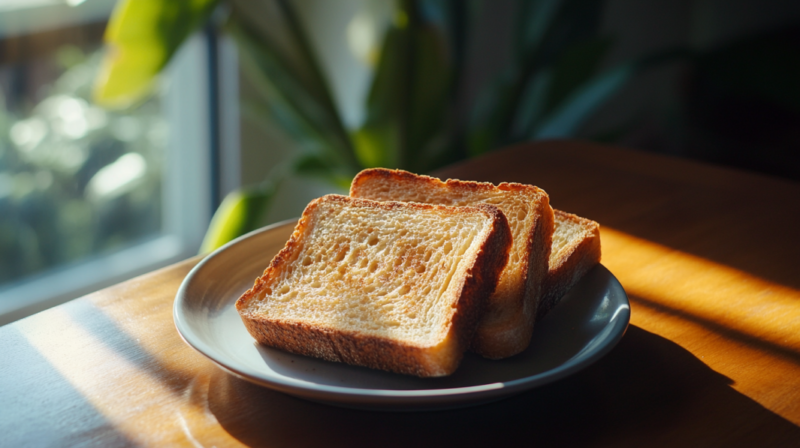
Crusty breads and toasted items pose challenges for braces wearers. Their hard texture can damage brackets or wires.
Unlike braces, Invisalign aligners can be removed when eating, allowing for greater flexibility with food choices.
Chewing these foods also puts excess strain on teeth and orthodontic appliances.
Avoid these bread products:
- Bagels and hard rolls
- Crusty baguettes
- Hard pretzels
- Croutons
- Melba toast
Choose softer alternatives like:
- Soft sandwich bread
- Tortillas
- Pancakes
- Muffins (without nuts)
These options provide carbohydrates without risking damage to braces. Remember to cut larger pieces into smaller, manageable bites.
6. Tough Meats and Their Alternatives
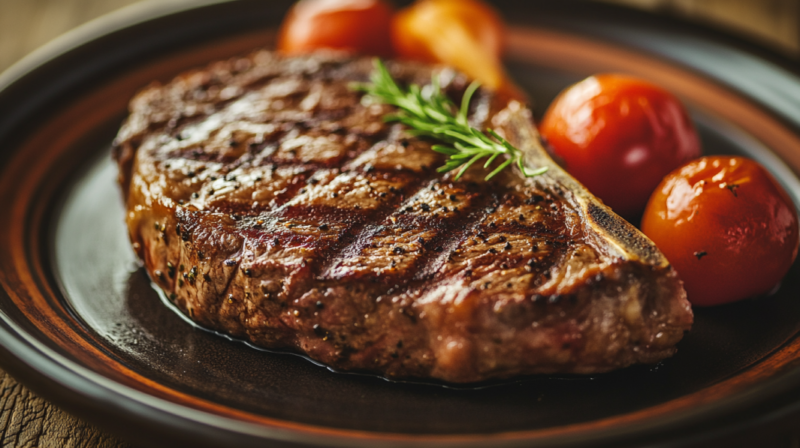
Chewy or tough meats can strain braces and teeth. They may also get stuck in orthodontic appliances, leading to discomfort and hygiene issues.
Meats to approach with caution:
- Beef jerky
- Tough steak
- Ribs
- Chicken wings
Instead, opt for tender meats like chicken, fish, or lean beef. Cut these into small, bite-sized pieces. Slow-cooked or braised meats are excellent choices, as they’re typically softer and easier to chew.
Ground meats in dishes like meatballs or meatloaf are also braces-friendly options. These provide protein without excessive chewing or risk to orthodontic work.
7. Ice and Its Impact on Braces
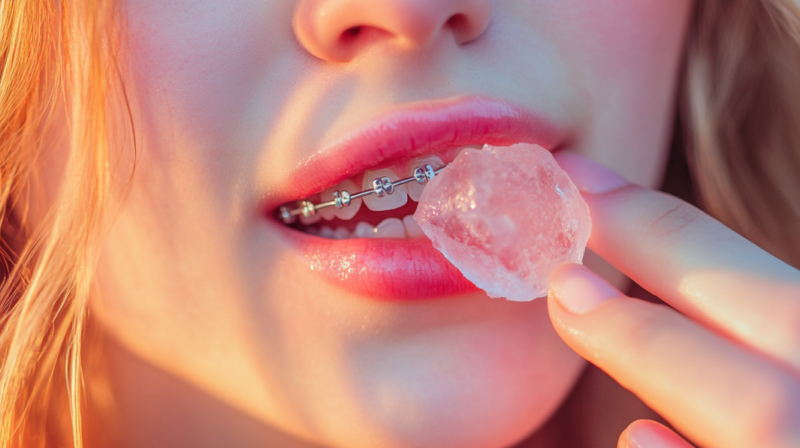
Chewing ice is harmful to teeth and particularly dangerous for braces.
The extreme cold and hardness can damage enamel and orthodontic appliances.
It may break brackets, bend wires, or even chip teeth.
Avoid chewing ice in any form:
- Ice cubes
- Crushed ice
- Shaved ice
Instead, use ice to chill beverages but don’t chew it. Opt for cold, soft treats like smoothies or frozen yogurt if craving something cool and refreshing. These satisfy the desire for coldness without risking damage to braces or teeth.
8. Gum and Other Chewable Items

Chewing gum and similar items pose significant risks to braces. They can stick to brackets and wires, potentially causing damage or dislodging components.
The repetitive chewing motion may also loosen orthodontic appliances over time.
Avoid these chewable items:
- Chewing gum (all types)
- Bubble gum
- Chewy candy
- Chewable vitamins
For fresh breath, use sugar-free mints that dissolve quickly. If needing vitamins, choose liquid forms or those that can be swallowed whole.
Always consult with an orthodontist before taking any new supplements while wearing braces.
9. Pizza
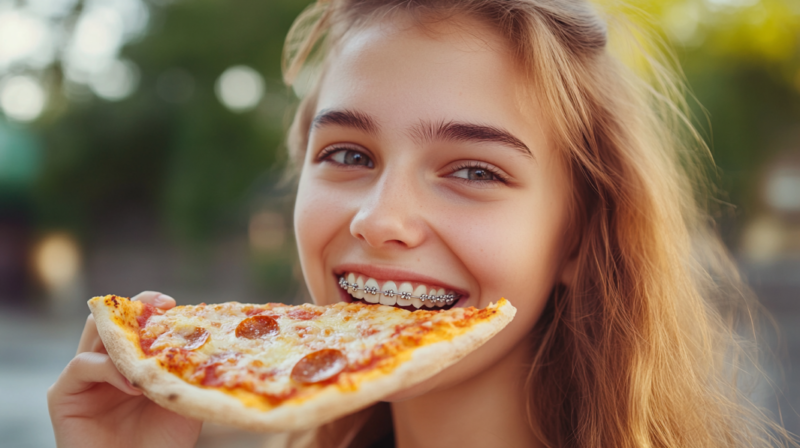
Pizza is a favorite food for many, but it requires careful consideration when you have braces.
While thin-crust pizza is generally safe, thick-crust or deep-dish varieties can be difficult to chew, potentially leading to damage to the brackets and wires.
Alternative Options
- Thin crust or soft, homemade pizza.
- Pizzas with soft, easy-to-chew toppings.
- Cutting pizza into smaller pieces before eating.
10. Hard Crackers or Cookies
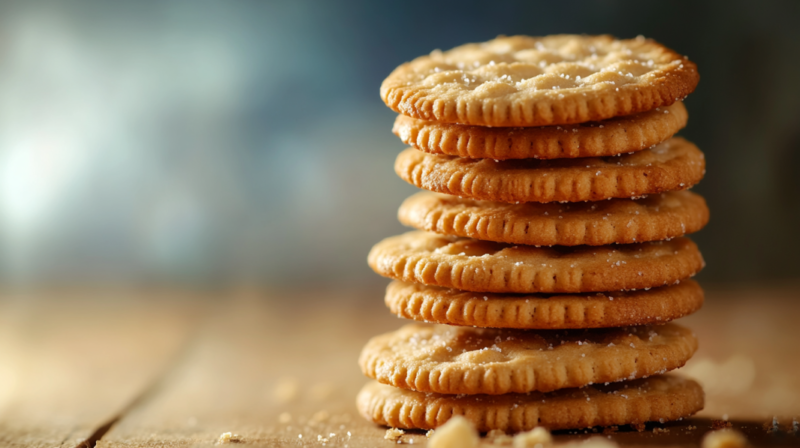
Hard crackers or cookies may be a satisfying snack, but they’re risky for anyone with braces.
The firm texture can put undue pressure on your brackets and wires, leading to potential damage.
Alternative Options
- Soft cookies or cakes.
- Crackers that soften in soup or milk.
- Soft baked goods like muffins or pancakes.

